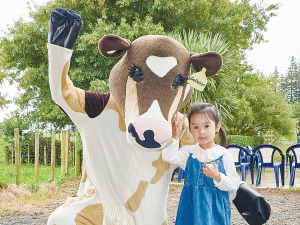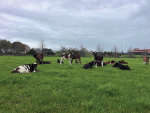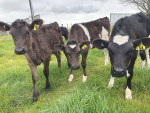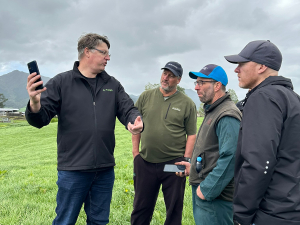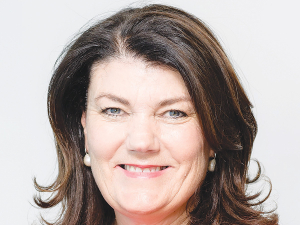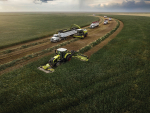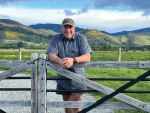More than 650 people attended the Owl Farm open day at St Peter's School in Cambridge earlier this month.
The demonstration farm, which provides opportunities for students to learn more about dairy farming and showcases the sector to the wider public, has welcomed more than 10,500 visitors since its inception in 2014.
The open day was a fun family day, with a milking demonstration in the rotary shed, a wetland tour and fun kids' activities including sitting in a milk tanker and tractor.
DairyNZ is one of the Owl Farm partners - Rosie the Cowbassador was on DairyNZ's stand at the open day, representing New Zealand's dairy cows and telling the dairy farming story to children.
DairyNZ education and community engagement manager Phillipa Adam says the Owl Farm open day was a great opportunity to show families a slice of dairy farming life.
"The dairy sector is always looking to attract more people to the sector," says Adam.
"About 37,000 people work on dairy farms throughout New Zealand, looking after our cows and helping create the milk and dairy products Kiwis love."
Another key goal of Owl Farm is demonstrating excellence in farm performance to contribute to a sustainable future.
DairyNZ is a partner in Owl Farm - created by St Peter's School and Lincoln University. Other partners include Ballance, Farm Source, PGG Wrightson Seeds and Westpac.
Adam says DairyNZ's involvement in Owl Farm is part of its broader education programme, which teaches young New Zealaders about dairy farming.
"In addition to Rosie's World, we organise visits to dairy farms for schoolchildren. This includes showing young people the work farmers are doing to reduce footprint, including riparian planting and restoring wetlands.
"DairyNZ creates in-school science resource kits aligned to the NZ curriculum. These kits support schools to teach curriculum-based subjects such as science and maths within a unique dairying context."
Owl Farm is home to 350 cows. Dairy is NZ's largest export, providing nutritious food for families and contributing to the economy and local Kiwi communities.
New Zealand produces 225 million servings of milk a year. One glass of milk provides 30% of the daily calcium growing kids need to develop healthy teeth and bones.

